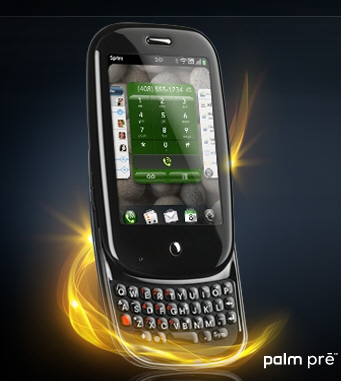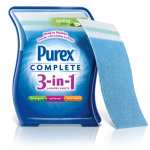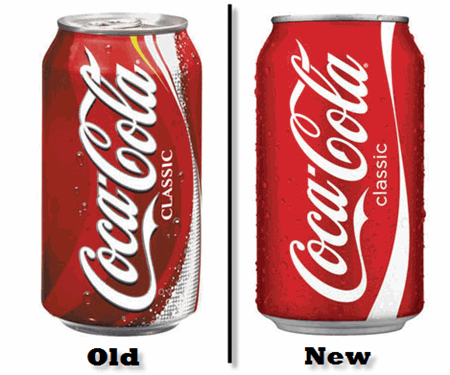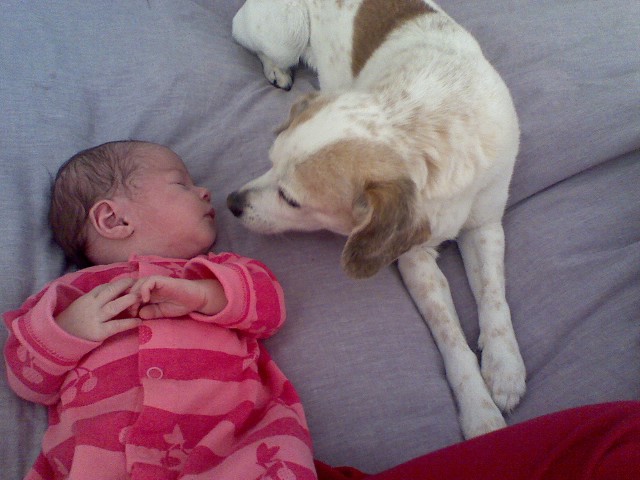Fauxbesity

......................................................................................................................................................................
Even dictionary.com is becoming outdated. With our new fast paced, technologically inclined society, it seems like we don't even have time to blink before it's time to update again. In order to "keep up with the times" many companies are introducing their own novelities. For fear of sounding cliche, some companies have opted to simply create new words in order to differentiate themselves. Millions of products and services clutter our marketplace, so how do we stand out? Ingenuity. Marketers and Advertisers today want to tell you something different, something that you don't already know. So they are going to coin a new phrase or define a new word to do it. That is sure to grab consumer attention...right?
Fauxbesity, a new word splashed across the pages of magazine advertisements, utterly baffles dictionary.com and my trusty old Merriam-Webster pocket dictionary. Perusing through Martha Stewart Living Magazine, this fancy little word jumped off the page, begging me to read on. Well done Subway, you caught my eye!
Subway defines Fauxbesity as a noun meaning the "half-hearted claims other fast food chains make about helping kids eat better." It seems that so many companies have tried to say the same thing in an innumerable amount of different ways. Enough is enough, there are only so many different variations available to be fought over. So Subway decided to leave the clutter behind and reinvent the health food arena with this catchy little new word.
In my personal opinion, I think this innovative word creation is a great idea for market differentiation. Let's face it, we are always growing and expanding, looking for bigger and better ways to stand out. Why not spice things up a bit? If it works, and people connect with your new "creation," I say go for it! Carry on fauxbesity!
Contributed by Carrie Friedrich
Adios Analog
The time has finally come. On Friday, June 12th, 2009 we witnessed history in the making. On this day, a federal law required all television broadcast stations to officially make the switch from the analog format to the digital format. The conversion is taking place for a number of reasons. Some of these motives include; the fact that digital is a more efficient transmission technology, opportunity for improved pictures and sound quality, increased options in programming, and the freeing up of many frequencies to be used in more efficient ways.
The FCC (Federal Communications Commission) and the Government are working hand-in-hand to ensure that everyone is aware of the conversion, and knows how to handle it. Numerous information sites have been created in order to ease the transition for all consumers.
The originial date for the analog to digital conversion was set for February 17 or 18, 2009. However, the House of Representatives voted and President Obama signed the bill to postpone to switch on the basis that millions of consumers were unprepared. Prepared or not, the switch took place on Friday and we saying Adios to Analog!
To read more information about the switch and other news from the Federal Communications Commission, please visit their website! https://www.fcc.gov/
Contributed by Carrie Friedrich
Palm says no to "O"

Just when you thought you had the latest and greatest Smart Phone on the market, along came the new >Palm pre. Available exclusively to Sprint customers (for now), the pre is Palm’s answer to the iphone. The phone rocks a 3.1 inch touch screen, WiFi and 3G connectivity, web browsing, Microsoft Outlook access, GPS, camera, and a QWERTY keyboard that slides beneath the screen—optimal for serious texters looking to avoid the error filled messages spit out by the combination of big fingers and small touch screens. Former iphone owners say the best thing about the pre is the ability to run multiple applications at one time.
But most unique to the pre, perhaps, is the name itself. Palm’s current handset lineup includes the centro, treo and treo pro. The “-o” on the end of each name seems to be an intentional nomenclature strategy. So did Palm ditch the “-o” for good? Probably not. My guess is they went with a standout name for a standout model. The meaning of the word “pre” offers a lot of creative potential in terms of concepts that are relatively transparent. Whereas preo sounds more like a car, and maybe does not differentiate the new phone quite as effectively from its predecessors. So no hard feelings, "O", I'm sure it's only temporary.
Contributed by Laine Beyerl
A New Spin on Laundry

A recently launched product may change your life: or at least, your laundry. Purex recently introduced Purex Complete 3-in-1 to the laundry detergent market. Based on the concept of “laundry simplified,” Complete 3-in-1 is the ultimate all in one laundry solution. The product offers a unique approach by combining detergent, fabric softener, and antistatic into one single sheet. The laundry sheet is used first in the washing machine as a detergent. It then travels to the dryer, acting as a fabric softener and antistatic agent activated by heat. Purex claims that their new sheet is not only cost effective, eliminating the need for multiple laundry products, but environmentally friendly as well. The product uses less water that is added to liquid detergents and less packaging to keep our landfills free from empty bottles.
The Complete 3-in-1 name, though a bit lengthy, is descriptive in nature most likely to convey the product benefits transparently to a consumer that may not have heard of the product before cruising down Aisle 7. The only down side of the name may come with future product extensions like “unscented” or “hypoallergenic”. The packaging could potentially become a bit crowded with descriptors.
Currently, Procter & Gamble detergent brands (Tide and Cheer) lead the market with a commanding 57.1% of the liquid detergent market and 75% of the powder detergent market (statistics according to IRI). But with such an innovative product, Purex stands to gain a bit of that share by taking a stand as a first mover. There are likely to be several ‘me too’ products popping up from other brands soon.
Contributed by Laine Beyerl
Fruit Naturals … duh

......................................................................................................................................................................
And now, all the way from Del Monte Foods, a type of fruit that “likes to take it all off..,” ready-to-enjoy, and available in seven tempting varieties, introducing … FRUIT NATURALS!
(crickets.)
Unfortunately for Del Monte, the excitement surrounding their new Fruit Naturals Brand has been squelched by the redundancy that begs consumers to consider if they have ever eaten fruit that is unnatural. While the simplicity and straightforward nature of the brand is appreciated by busy consumers, this brand name seems to have fallen a little bit short in the department of innovation and received a gold star for redundancy. The intent of the name, I believe, is to highlight the convenient, ready-to-eat quality of the product. The fruit cup allows you to bypass the peeling and slicing and simply enjoy the natural fruit right away. It is my hope that all fruit consumed, whether canned, jarred, dried, or fresh is and will remain natural … despite new product extensions boasting au natural fruit.
Contributed by Carrie Friedrich
Forget the Whales, Save Saturn
Do you remember your first car? I’m sure you remember when you first got it—how liberating it felt to hold the keys to your very own car. My first car arrived as a Christmas present from my generous grandparents. It was the perfect car. Shiny, clean, fast, fun.
It was a 1996 Saturn, and man, it was cool. My friends drove around in brand new 2002 VW’s, Jeeps, and Hondas. But 1996 was a great year for car manufacturers, and my car was better. The windows had to be rolled up manually, this is how major league baseball players used to build arm strength, before steroids. The stereo system sported a state of the art cassette deck. But best of all—it had a rubber bumper. Okay, maybe it was plastic, but if functioned like rubber. I could back into anything from a tree to a public library and just bounce right off. Perfect for new drivers.
Saturn built a brand around experiences like mine. Launched in the late 1980’s by General Motors, Saturn quickly became positioned as a family friendly brand. Their smaller, affordable, comfortable and safe models suited customers of all ages. New car buyers chose Saturn vehicles not only for the car, but for the Saturn experience. The Saturn sales staff quickly became your new family friend, concerned not only about your financial limitations but about your safety, your life, your children, your family. Saturn also cares about the bigger picture. Community involvement is a Saturn standard, they participate not only in sponsoring national causes but also make an effort to contribute to each local community that hosts a dealership.
As General Motors recently filed for bankruptcy protection, executives announced that they have a plan in motion for the company to quickly rebound and maybe even one day turn a profit again. Hummer was sold. Pontiac may dissolve. The future of the Saturn brand has yet to be set in stone. If it is sold, how would it be integrated into a new brand, and would the new ownership change Saturn’s core values, personality and voice? A possible sale to Penske Automotive Group is in the works, some say the pending sale could change the face of the way cars are manufactured and sold in the US. There are rumors of Penske shopping for a foreign manufacturer.
General Motors is proceeding with caution, as they should. The disappearance or tarnish of the Saturn brand would truly be a shame, and not just to Saturn owners. Saturn is an icon for the American family, and a model to branders everywhere for how to build a brand that embodies its core values in every internal and external communication outlet available.
Now, only time will tell what will happen to the Saturn brand. In the mean time, I hope whoever ended up with my old ’96 Saturn is taking care of my favorite car. And anytime they want to trade, I would be glad to have it back.
Contributed by Laine Beyerl
Milk Chocolate Monkeys

......................................................................................................................................................................
Flipping through the pages of Martha Stewart’s Living, a print advertisement caught my eye. Endangered Species. What comes to mind? Forest Frogs, Western Gray Whales, Grevy’s Zebras, Tazmanian Devils, and Purple Marsh Crabs. But this creative little title has proven me wrong … a chocolate brand. I don’t know about you, but I generally like to know what I’m getting myself into when it comes to my chocolate, and this threw me for quite the loop. Endangered Species Chocolate brand has admirably introduced a great intention of cause-related marketed; incorporating people’s love for chocolate while simultaneously saving endangered wildlife. Sadly, by naming the product after the cause it may lose some of its potential customers by misleading them. Speaking as a true chocolate connoisseur, I can tell you that as I pan down the aisle of my local grocery store to find the perfect fix for my sweet tooth, the arbitrarily named Endangered Species Chocolate would most likely be disregarded. On the other hand, the chocolate brand could gain popularity simply by being out of the ordinary, catching the wandering eyes of consumers and drawing curious attention. Unfortunately, many shoppers do not have the time to peruse the aisles and investigate arbitrarily named products to discover their true contents: chocolate.
Endangered Species Chocolate promises that “10% of net profits [are] donated to help support species, habitat and humanity.” This effort of “Gourmet chocolate that gives back” is the perfect way to justify the chocoholic tendencies of consumers by donating portions of the sales to saving endangered wildlife. I think the product would fare much better on the shelves if the arbitrarily named product was restructured to portray its actual contents of chocolate.
The clever tagline reads “Savor chocolate. Save our planet.” Ok, you don’t have to ask me twice.
Have any name change suggestions for Endangered Species Chocolate that would entice you to indulge in a sweet treat for the love of Forest Frogs?
Contributed by Carrie Friedrich
A Brand New World

......................................................................................................................................................................
Out with the old, in with the new.
In order to keep up with our fast-paced marketplace, companies, products, and services are constantly exploring fresh ideas and new identities. Many of these rebranding efforts result from a number of needs including, but not limited to: ridding a company of negative connotations, entering a product into a new market segment, merging companies, or simple updating. Many notable entities have succeeded in rebranding efforts focused on the company itself (utilizing new logos, mottos, taglines, names, etc.), and have retained unwavering brand loyalty. And now, to turn the spotlight on one such company …
Coca-Cola. This exemplary brand has undergone a makeover to add a fresh new twist to their bottles and cans. Coke cans and Sprite cans are now donning new looks with clean and fresh features. Not to say the old cans were in desperate need of a change, but it is nice to keep consumers on their toes in order to truly appreciate the value of the brands they patronize.
On the Coke Classic can, the excess clutter of bubbles, stripe of yellow, and plentiful swirls have been eliminated to allow full attention to be focused on the red and white logo of Coca-Cola. In my opinion, this rebranding effort was a brilliant move for such an iconic company. Coca-Cola has established itself as a powerful brand and has earned its claim in the soft drink industry. This rebranding effort acknowledges the bold, confident, and trusted name of Coca-Cola that so many people worldwide know and love.
Sprite, a Coca-Cola product, has also received a can makeover. The new cans appear to be somewhat edgy and revolutionized. The colors are vibrant, edges are jagged, and logo is somewhat futuristic. The same basic color schemes and font have been incorporated into this updated new look. This rebranding effort reveals careful positioning and planning on behalf of Coca-Cola. With all the new soft drink variations entering the industry, something had to be done in order to keep Sprite on the leader board. The new look connects with the target market using a fresh, inventive, and confident approach.
These two examples of rebranding show the important impacts of staying one step ahead of the industry. With more creativity than ever before, companies are constantly competing for top-of-mind awareness amongst consumers. Researching, experimenting, updating, reinventing, and connecting; these terms are becoming the common vernacular of today’s companies.
As the saying goes, the only constant in the universe is change.
Don’t get left behind.
Contributed by Carrie Friedrich
Welcome back Elizabeth!

....................................................................................................................................................
Just in case you've been under a rock for the past few months, on April 6th Zoey Elizabeth McGaha arrived a healthy 17.5 inches long and 6 lbs 9 oz. Congratulations Elizabeth! We are so happy for you and look forward to hearing all of your baby-mama stories. Plus I'm sure you'll have plenty of volunteers should you ever desire a baby sitter.
Contributed by Evelyn Chapin
Dating? Try "Going Dutch"
Inspired by a recent discussion on the NYTimes about Dating in a recession I was curious to find out the origins of the term "Going Dutch".
Definition: When every participant in a shared activity pays his or her own way.
Etymology: First of all it appears that Dutch etiquette has always promoted the act of paying separately when going out in groups. However, during the Anglo-Dutch wars in the 17th and 18th centuries (4 in total) the rivalry inspired the English to concoct many phrases referencing the Dutch in a negative manner, "going dutch" being one of them. Other phrases include:Read more
